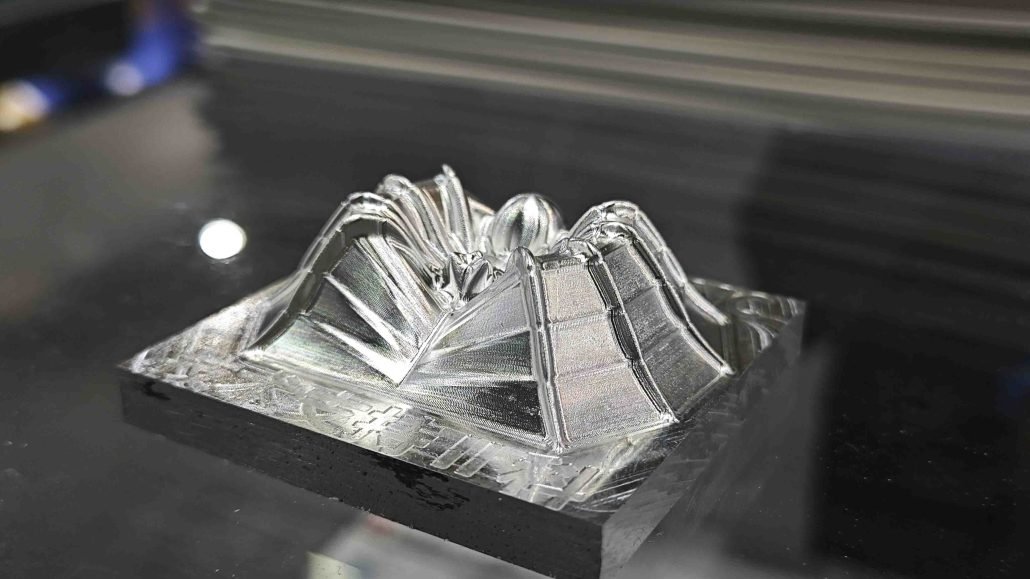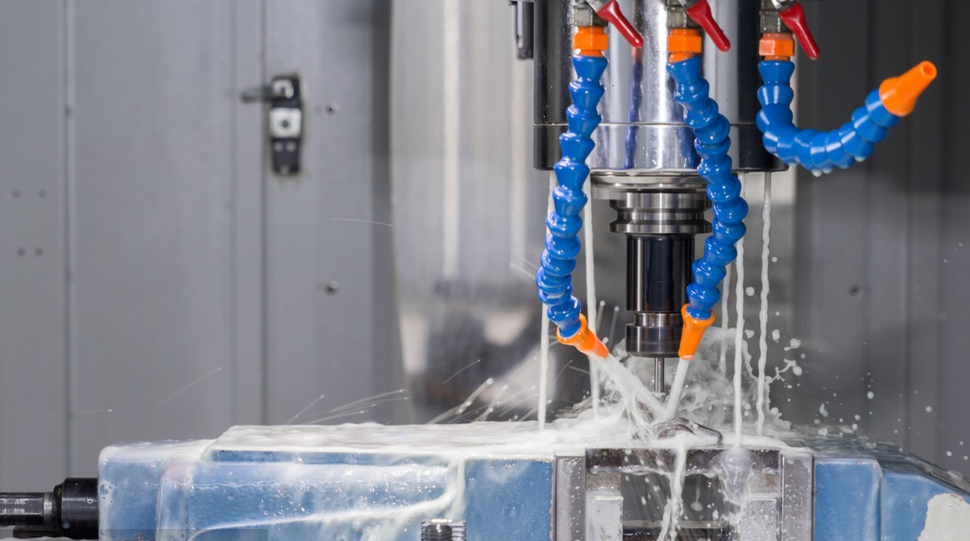In many industrial machining applications, cutting fluid is the material used in industrial machining to reduce operating temperature, lubricate and clean tools. They are made from a mix of water and other additives that help improve tool durability while also reducing friction, heat and fatigue during the job.
So the use of lubricating and cooling materials is a key factor. However, some people may find it feasible to substitute ordinary water for cutting fluid. While this may sound economical, it can have serious consequences. In this article, we will explain in detail why not use pure water as cutting fluid and the importance of using the right cutting fluid. Help you to use the right cutting fluid in the CNC machining process

Why Can’t Pure Water be Used as Cutting Fluid in Machining
Water is often used as a cutting fluid in machining processes due to its cooling properties, which help to prevent the tool and workpiece from overheating. However, pure water cannot be used as a cutting fluid in machining due to several reasons.
Firstly, pure water is a poor lubricant, which means it cannot provide enough lubrication to the cutting tool and workpiece during the machining process. As a result, the tool and workpiece can wear out quickly, leading to poor surface finish and reduced tool life. Pure water lacks the necessary lubricating properties that are required to reduce friction between the cutting tool and workpiece. This results in the tool and workpiece wearing out quickly due to the high friction between them. Poor surface finish and reduced tool life are some of the consequences that arise from using pure water as a cutting fluid.
Secondly, pure water has a high surface tension, which means it cannot penetrate the narrow spaces between the tool and the workpiece. This can cause frictional forces to increase, leading to higher cutting forces and heat generation, which can damage the tool and workpiece. The high surface tension of pure water makes it difficult for it to penetrate the narrow spaces between the cutting tool and workpiece. This results in frictional forces increasing, leading to higher cutting forces and heat generation. These forces can cause damage to both the tool and workpiece, which can impair the overall effectiveness of the machining process.
Lastly, pure water is not effective in flushing away the chips produced during machining. This can cause chips to accumulate on the tool and interfere with the machining process, leading to poor surface finish and reduced tool life. Chips produced during the machining process can accumulate on the tool and workpiece, which can interfere with the machining process. Pure water is not effective in flushing away these chips, which can result in poor surface finish and reduced tool life.
To overcome these limitations, cutting fluids are used in machining processes. Cutting fluids are specially formulated to provide lubrication, cooling, and chip removal during the machining process. They also contain additives that help reduce friction, prevent rust, and improve tool life. The use of cutting fluids reduces friction between the cutting tool and workpiece, removes chips produced during the machining process and cools down the cutting tool to prevent overheating. This results in a better surface finish and longer tool life.

In summary, pure water cannot be used as a cutting fluid in online cnc machining due to its poor lubrication, high surface tension, and inability to flush away chips. Cutting fluids are essential for ensuring efficient and effective machining processes. The use of cutting fluids can help to reduce friction between the cutting tool and workpiece, remove chips, prevent rust and improve tool life, ensuring that the machining process is both efficient and effective. By using cutting fluids, manufacturers can ensure that their machining processes are optimized for performance, resulting in high-quality products and reduced production costs over time.
Cutting Fluids that Cannot be Mixed with Water
Certain types of cutting fluids are not compatible with water and cannot be mixed with it. These include:
- Straight Oils: These cutting fluids are often made from petroleum or vegetable oils and are not water-soluble. They are commonly used for heavy-duty operations such as drilling, tapping, and broaching.
- Chlorinated Solvents: Cutting fluids containing chlorinated solvents cannot be mixed with water as they can react and form harmful gases. These fluids are often used for metalworking applications such as grinding and milling.
- Synthetic Fluids: Synthetic cutting fluids are designed to provide better lubrication and cooling properties than traditional cutting fluids. They are not water-soluble and should not be mixed with water.
It is important to always check the manufacturer’s recommendations before mixing cutting fluids with water to avoid any health and safety risks.

Application of Cutting Fluids in Machining Processes
Cutting fluids are used in machining processes to improve the performance of metalworking operations. These fluids are typically applied to the cutting tool or the workpiece during the machining process. The benefits of using cutting fluids include reducing heat generation and friction, improving surface finish, increasing tool life, and reducing tool wear.
There are different types of cutting fluids available in the market, including oils, emulsions, and synthetics. The choice of the cutting fluid depends on the type of material being machined, the cutting tool, and the machining operation. For example, water-based fluids are suitable for machining non-ferrous metals, while synthetic fluids are recommended for high-speed machining operations.
The application of cutting fluids is critical in machining processes as it helps to reduce the risk of tool failure, increase productivity, and improve the quality of the finished product. However, the use of cutting fluids can also lead to environmental concerns, such as the disposal of used fluids and the potential for contamination.
To sum up, the application of cutting fluid is an essential aspect of the processing process, pure water can not completely replace the cutting fluid, if the use of pure water as cutting fluid, will lead to the decline of processing quality, tool wear, environmental problems and many other hidden dangers. While the use of cutting fluids can provide significant benefits in terms of performance and productivity, it is critical to consider potential environmental impacts and implement appropriate measures to minimize any negative impacts. Therefore, in the process of using cutting fluid, we need to choose the right liquid, and the waste liquid for proper treatment, environmental protection will not be a big problem.


